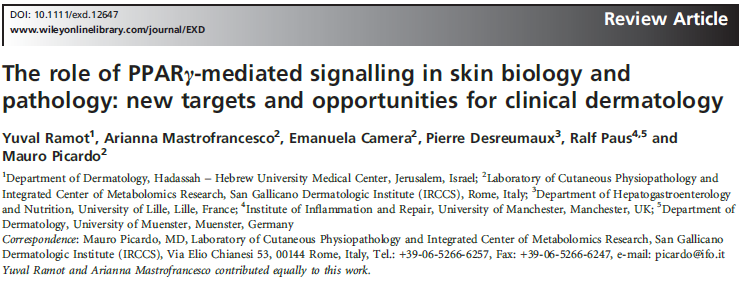Nogra Pharma is available to give comprehensive Project presentations, provide additional Project specific details or confidential information and discuss potential collaborations or out-licensing opportunities with interested companies.

Abstract
Peroxisome proliferator-activated receptors (PPARs) are ligand-activated transcription factors that modulate the expression of multiple different genes involved in the regulation of lipid, glucose and amino acid metabolism. PPARs and cognate ligands also regulate important cellular functions, including cell proliferation and differentiation, as well as inflammatory responses. This includes a role in mediating skin and pilosebaceous unit homoeostasis: PPARs appear to be essential for maintaining skin barrier permeability, inhibit keratinocyte cell growth, promote keratinocyte terminal differentiation and regulate skin inflammation. They also may have protective effects on human hair follicle (HFs) epithelial stem cells, while defects in PPARγ-mediated signalling may promote the death of these stem cells and thus facilitate the development of cicatricial alopecia (lichen planopilaris). Overall, however, selected PPARγ modulators appear to act as hair growth inhibitors that reduce the proliferation and promote apoptosis of hair matrix keratinocytes. The fact that commonly prescribed PPARγ-modulatory drugs of the thiazolidine-2,4-dione class can exhibit a battery of adverse cutaneous effects underscores the importance of distinguishing beneficial from clinically undesired cutaneous activities of PPARγ ligands and to better understand on the molecular level how PPARγ-regulated cutaneous lipid metabolism and PPARγ-mediated signalling impact on human skin physiology and pathology. Surely, the therapeutic potential that endogenous and exogenous PPARγ modulators may possess in selected skin diseases, ranging from chronic inflammatory hyperproliferative dermatoses like psoriasis and atopic dermatitis, via scarring alopecia and acne can only be harnessed if the complexities of PPARγ signalling in human skin and its appendages are systematically dissected.
